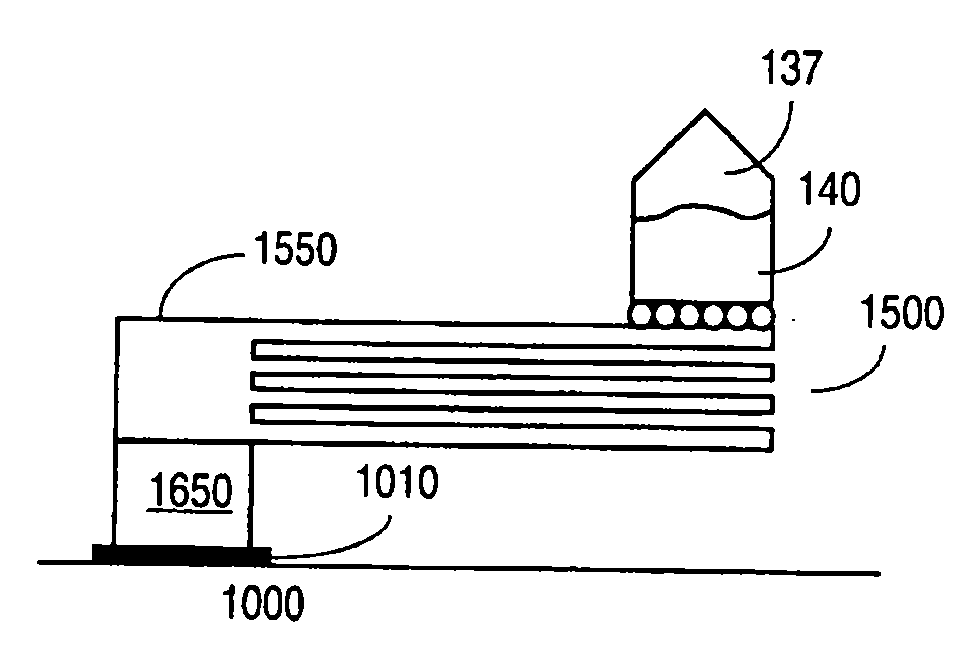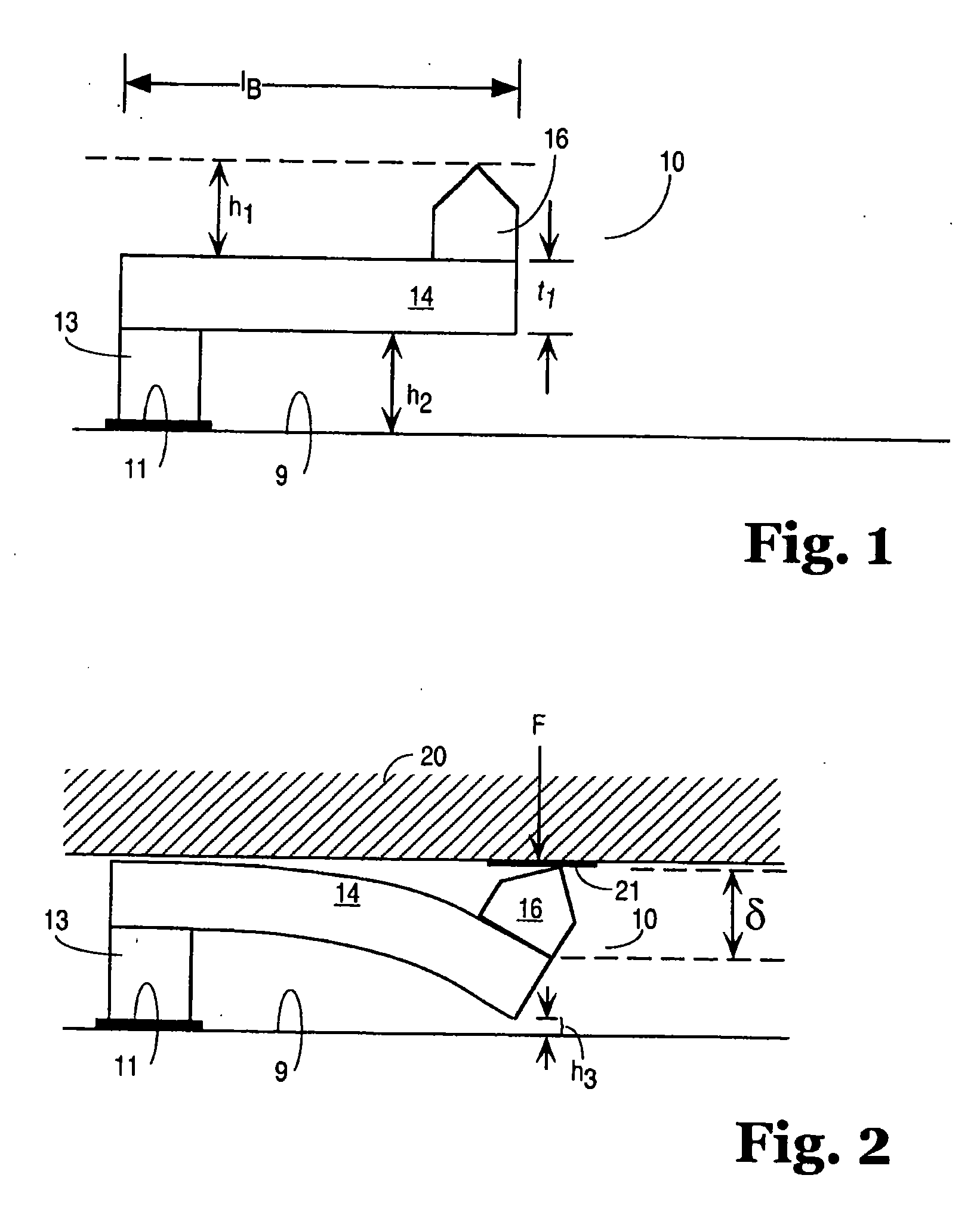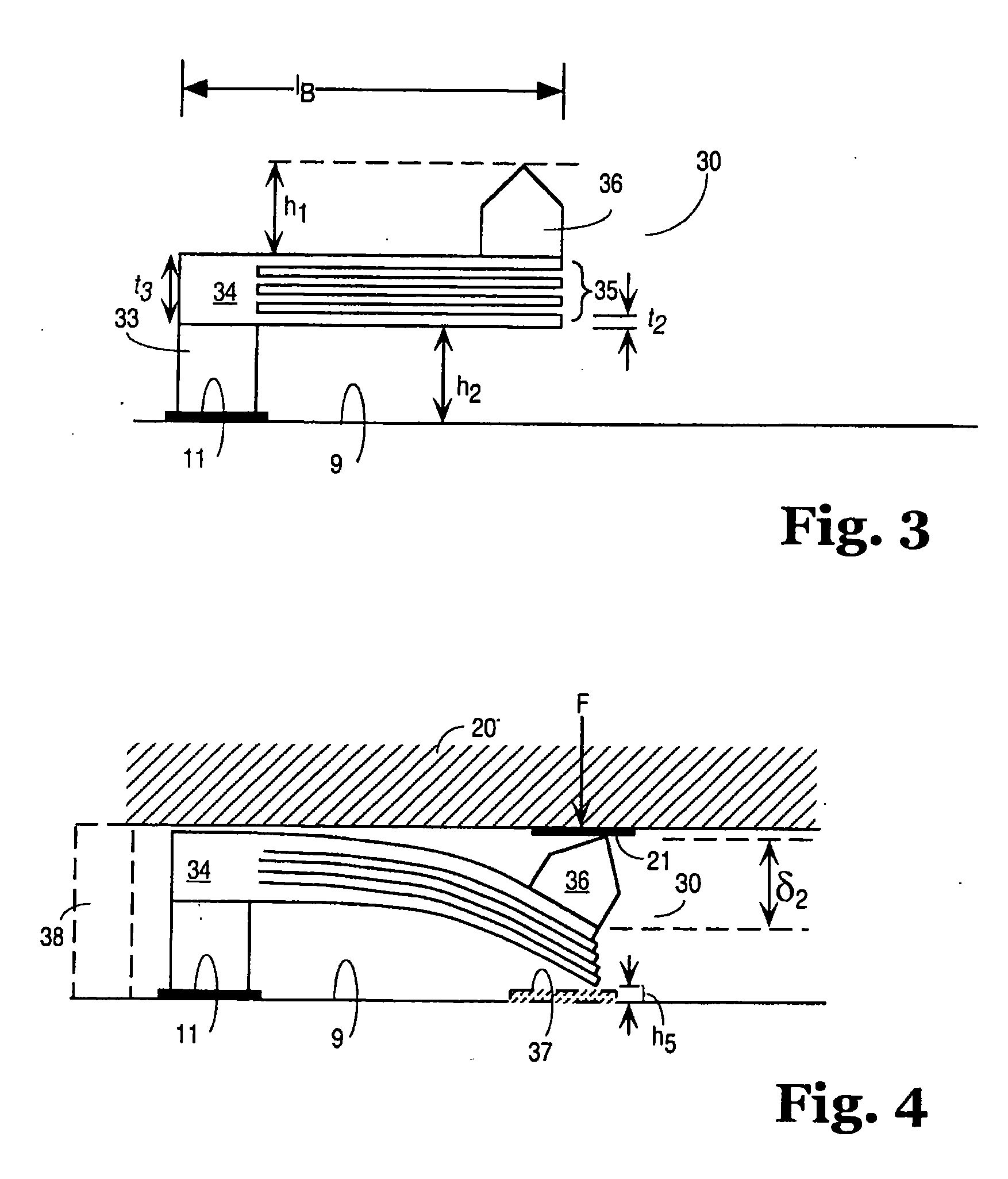Spring interconnect structures
a technology of interconnection elements and springs, which is applied in the direction of coupling device connections, semiconductor/solid-state device details, instruments, etc., can solve the problems of increasing the difficulty of fabricating interconnections, limiting the design choices for the shape and metallurgy of the contact portion of the interconnection elements, and increasing the difficulty of controlling or establishing desired shapes at the contact end. , to achieve the effect of improving the mechanical properties of each interconnection element, reducing the pitch, and improving the body
- Summary
- Abstract
- Description
- Claims
- Application Information
AI Technical Summary
Benefits of technology
Problems solved by technology
Method used
Image
Examples
Embodiment Construction
[0119]The invention relates to interconnection elements, including contact elements. According to one aspect of the invention, the invention contemplates a method of forming an interconnection element having a body including a plurality of resilient or flexural elements, e.g., leaf portions. The invention also relates to a method of bringing together two substrates, such as an electronic component having a plurality of interconnection elements with a second electronic component having an array of contact pads or terminals.
[0120]Suitable electronic components include, but are not limited to, an active semiconductor device, a memory chip, a portion of a semiconductor wafer, a ceramic substrate, an organic substrate, a PCB, an organic membrane, a polyimide sheet, a space transformer, a probe card, a chip carrier, and a socket. The electronic component may be an active device or a passive device that supports one or more electronic connections. In general, suitable electronic components...
PUM
| Property | Measurement | Unit |
|---|---|---|
| size | aaaaa | aaaaa |
| pressure | aaaaa | aaaaa |
| resilient | aaaaa | aaaaa |
Abstract
Description
Claims
Application Information
 Login to View More
Login to View More - R&D
- Intellectual Property
- Life Sciences
- Materials
- Tech Scout
- Unparalleled Data Quality
- Higher Quality Content
- 60% Fewer Hallucinations
Browse by: Latest US Patents, China's latest patents, Technical Efficacy Thesaurus, Application Domain, Technology Topic, Popular Technical Reports.
© 2025 PatSnap. All rights reserved.Legal|Privacy policy|Modern Slavery Act Transparency Statement|Sitemap|About US| Contact US: help@patsnap.com



